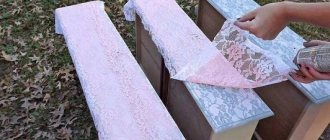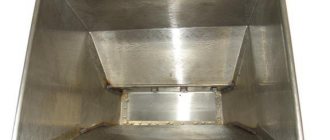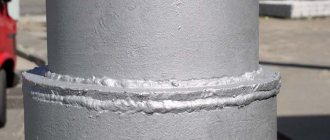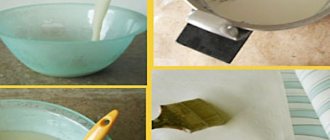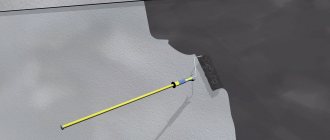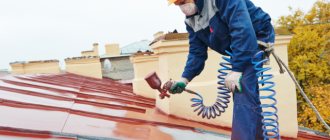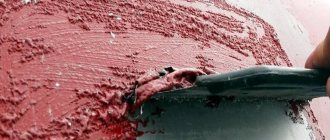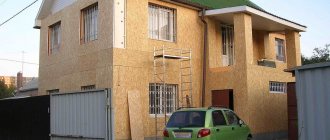Power tools are used at construction sites, factories, enterprises, private workshops, garages, and homes. If you need to cut a metal part, clean it from a layer of rust, and sand the surface, use an angle grinder. Before performing certain technological operations, it is necessary to select an attachment for an angle grinder for grinding metal.
Grinder attachment for metal grinding
Typical sizes
When visiting a hardware store, you can see a wide variety of attachments for an angle grinder. They differ in structure, diameter, thickness. You need to understand how important the technical parameters of the equipment are. If the diameter is larger than permissible, the following problems may occur:
- A low-power tool will not be able to work effectively with large-diameter equipment.
- The linear speed of the cutting edge increases depending on the size. If it is large, the equipment may collapse.
- To work with larger equipment, you need to remove the protective shield. However, this makes the work process unsafe for humans.
The diameter of the central hole, which is intended for landing on the rotating shaft, is 22.2 mm. Typical external diameter sizes are 115, 125, 150, 180, 230 mm.
The new disks contain all the information necessary for the buyer - diameter, thickness, rotation speed, areas of application of the equipment.
Rust removal
To quickly and effectively combat pockets of corrosion, you should also use a stripping machine.
The best materials are the fiber and petal discs described above - they will ensure quick and effective removal of rust on large surfaces. If, after working with these circles, rust pores remain on the surface, additionally use SCM discs, which will easily remove rust from small depressions and pores.
However, we often deal with rust, which is located in difficult-to-process, hard-to-reach places (on thresholds, edges, in recesses). In such cases, the most convenient would be an axial grinder, for example Rodcraft 7040 or a small angle grinder Rodcraft 7100. Where there is too little space for an angle grinder, such machines may be quite sufficient.
Rodcraft 7040 axial grinder
In tandem with these machines, special grinding rollers (spiraband) and small grinding wheels (siafix) are used. Working speed with rollers - up to 23,000 rpm, with siafix circles - from 15,000 to 30,000 rpm. for 50 mm discs, and 13000-27000 rpm. for discs with a diameter of 75 mm.
As a result, the small size of the machine and grinding materials provide excellent access to repair areas, and the high speed of work ensures fast and effective rust removal.
In the case of processing the edges of doors, the edges of the hood or trunk lid, various recesses and “narrow” places on the car body, you can also use... a regular cutting disc! It is clear that its main purpose is to cut metal, however, with careful and careful handling, the cutting wheel can be successfully used to very quickly and aggressively remove rust, especially in hard-to-reach places.
Read also: How to catch an arc when welding
Purpose
Among the huge variety of discs for angle grinders, 4 groups of main attachments can be distinguished. They are divided depending on the technological operations performed.
Cut-off
Angle grinder discs are most often used when cutting products from different materials. There are several types of cutting discs:
- Nozzles for metal. Equipment made from electrocorundum. Indicated in blue.
- Attachments for cutting natural stone or concrete. Such discs are made of silicon carbide. Indicated in green. Not suitable for working with red brick or ceramic tiles.
- Equipment used when working with tiles, porcelain stoneware, red brick. Made of metal. The edges are covered with diamond chips. During active operation of metal discs, coolant must be used.
- Nozzles for wood. These are metal discs no different from circular saws.
It is better not to use an angle grinder with a disc for wood. This is due to the fact that circular equipment is extremely dangerous when working with an angle grinder. It often slips off the rotating shaft, jams, and bounces off.
Roughing
Using an angle grinder, metal surfaces are often cleaned of rust, plaque, and paint. To do this, use a nozzle on which a metal wire is fixed. A peeling disc is a product with a brush attached to the outer diameter or a bowl with metal rods sticking out forward.
Grinding
A grinding disc for an angle grinder for metal is called a flap disc. It is used when working with metal and other materials. Separate pieces of sandpaper are attached to it. The size of abrasive particles depends on the required degree of cleaning.
Petal disc for grinder
Sharpening
Most often, sharpening stones are used when working with machine tools. If you don’t have a tool, you can attach a stone for sharpening tools and knives to an angle grinder. Special attachments for power tools with a thickness of at least 0.5 cm are sold.
Paint remover attachments
Old paint often has to be removed from walls or metal surfaces. In each specific case, different types of fastening machines are used.
What kind of painting can it be?
- Very often, in old houses of the “Stalin” or “Khrushchev” type, the walls were painted with synthetic paints, like nitro enamels, which were applied directly to cement-sand, cement-lime and even lime-sand plasters. If you received exactly this finishing option, then we can say that you are very lucky. In this case, the film is relatively easy to remove, in layers, since synthetics cannot penetrate deeply into the plaster. Of course, if the brushes were made on a primer, then the process will become much more difficult, since adhesion there is several orders of magnitude stronger.
- Petroleum coatings, unlike nitro enamels, are much more difficult to remove, since they are more elastic and cannot lag behind in layers, and often simply rub the surface when trying to remove them. The same can be said about polymers, which are quite elastic, especially since they were used over primers, which significantly complicates dismantling.
READ How to connect brushes to an angle grinder Zubr
Thermal method
The most effective method of cleaning wooden surfaces from paint and varnish is the heat treatment method. Using a hair dryer or torch, the old surface is heated to the melting point. Dye
softens and flakes off, after which it can be easily cleaned with a hand spatula. The advantage of this method is that even thick layers of paint can be removed quickly and efficiently.
Heat treatment and removal of paint from the surface
The processing method is only suitable for wood, and in some cases for metal. Ineffective for plastic, the latter begins to melt and deform at high temperatures. This method is of little use for treating painted concrete, stone or plaster surfaces. A significant disadvantage is the release of volatile toxic substances when the paint is heated.
Conclusion
In addition to nozzles, paint is also removed from the surface chemically using various types of washing. But these methods are toxic and hazardous to health.
Cleaning up minor defects
To eliminate small defects on a paint and varnish machine, an eccentric rotary vibrating machine with an eccentric stroke of 5-8 mm, a rigid plate (for example, with a diameter of one hundred and fifteen mm) and grinding wheels of P80 and P150 gradation (the former are used in the main defect area, the latter in peripheral areas) . Working speed. Up to ten thousand rpm.
An example is a Rodcraft seven thousand six hundred sixty-five two-handed pneumatic clipper or a Festool WTS 150/7 electric clipper, a Sia seven-hole sanding pad and Siadrive Siafast sanding paper (see table at the end of the article).
Professional eccentric sander Festool WTS 150/7 (eccentric stroke seven mm)
Special SCM mugs also cope effectively with the task. Moreover, not only when removing standard layers of enamels with minor defects, but also when removing thick layers of paintwork. See next section.
Table of materials and equipment used
How to properly change a disc on an angle grinder?
To change the attachment for an angle grinder, you need to use a special key, which is included with the equipment. A beginner needs to learn the procedure so as not to damage the equipment and tool. Replacement steps:
- Fix the nozzle motionless. To do this, there is a special key on the front of the angle grinder body (on the other side of the rotating shaft). You need to unplug the tool, press the button, tighten the disk a little so that the spindle fits into the locking hole.
- There are two holes on the pressure ring that fits over the equipment. You need to insert a special key for angle grinders into them.
- With one hand, hold down the disk lock button, and with the other, slowly turn the key counterclockwise with force.
- When the locking ring starts to rotate, you can unscrew it by hand.
After removing the pressure ring, you need to remove the equipment and check the condition of the lower flange. If there is a layer of dirt or remnants of the material being processed, you need to clean the base with a brush. To do this, remove the bottom flange. You can remove the protection. To do this, you need to unscrew the retaining bolts or press the locking ring.
After installing the new equipment, you need to screw on the clamping ring. Next, hold down the rotating spindle lock button. Place the key in the holes of the clamping ring and tighten it slowly while holding the lock button.
Replacing a disc on an angle grinder
Using a drill or hammer drill to remove paint from walls.
If you have a powerful drill, you can try paint remover attachments designed for drills.
Drill attachment
An attachment for a drill on which sheets of abrasive material are attached. Fixation occurs due to Velcro. To be honest, this is complete nonsense and in reality such an attachment turns out to be useless. Don't ever buy this one.
You can try this brush. The removal process turns out to be quite effective and high quality. The surface cleans well, but don't think you can clean even a quarter of a square meter in an hour with this brush. Suitable for those who have a lot of time.
Owners of rotary hammers are luckier than their neighbors. Thanks to a special attachment in the form of a spatula, you can quite successfully remove a layer of old paint along with a layer of putty and plaster and concrete :). A square meter per hour is quite realistic. I think the neighbors hated me because I hammered for 2 hours on Saturday.
The attachments were immediately purchased after purchasing the hammer drill. Such gadgets are inexpensive, 100-200 rubles each.
Attachment for removing paint and the top layer of putty and plaster
I tormented my neighbors with this attachment and tested their patience, but no one seemed to come running to complain. Everyone was understanding.
I note that after using the hammer drill the wall becomes very unflattering, but the paint is completely removed, and then you can plaster it again and putty.
Grooves for sockets and switches were previously made on the wall. As a result, the wall completely turned into a terrible concrete mess. In one of the following posts I will show how I plastered it.
Ensuring safe operation
The grinder is considered one of the most dangerous power tools used on construction sites. While working with it, you need to follow a number of rules:
- Use protective equipment - mask or goggles, gloves.
- Do not remove the protective cover during operation.
- Never use blades with a larger diameter than stated on the power tool.
- Do not use grinding discs when cutting parts.
- Check that the clamping ring is securely fastened before starting the electric motor.
- You cannot cut the workpiece closer to the center if it has two support points at the edges. Because of this, the disk can jam and rupture.
- Check the integrity of the equipment before starting work.
- Do not pinch the clamping ring.
- Do not use the grinder near flammable materials or liquids.
- After starting the tool, you need to wait a few seconds for the disk to spin at maximum speed.
- Do not press the tool against the workpiece when cutting.
- If the disk is jammed, you must immediately turn off the tool.
- Metal corners, profiles, and large-diameter pipes are cut in two approaches.
During active work with an angle grinder, you need to use coolant, which is poured over the cut area.
The instrument itself should be allowed to rest every 5 minutes. An angle grinder can perform various technological operations. There are different types of equipment for this. In order to avoid mistakes when choosing equipment, it is important to take into account the power and dimensions of the tool. Also, we must not forget about safety precautions.
About rust converters and paint removers
To remove rust and clean old paintwork down to metal, Western companies recommend using exclusively mechanical means - sanders, sandblasting, brushes.
And none of the leading Western manufacturers of paints and varnishes produces or recommends the use of rust converters or neutralizers. Of course, this is partly explained by the fact that it is generally not customary to repair rotten parts there, but the main argument is that the remaining acid, which is part of such products, can provoke corrosion later, after painting. So using a rust converter for treatment, whatever you say, is tempting (especially if the rust is everywhere), but risky.
But some companies have a remover of old paint - it softens and swells the paint, after which it is removed with a spatula or sander. However, the use of such washes is also a rather dubious idea. The aggressive chemical composition of these reagents does not allow us to say with confidence that we will be able to completely remove them after use. This means there is no guarantee that our new coating will not receive completely unwanted defects in this way - chemistry is chemistry. And even if a wash is used, it needs to be applied only to the entire surface of the part (otherwise the paint will still swell at the borders), which is not practical when removing small defects, say, a small dent.
Thus, the most effective method today for cleaning paintwork defects to metal is mechanical processing, that is, grinding. Modern grinding materials and technologies make it possible to do this work without losing time to chemical methods, and without any risk.
The defects awaiting us at this stage can be divided into the following types:
- minor defects (scratches, chips, small dents),
- major damage (parts after straightening, thick layers of old repair coatings, putties, primers),
- pockets of corrosion,
- welds,
- anti-gravel coating,
- sticky tapes.
Read also: Bronze alloy composition in percentage
Let's figure out which tools and materials will be most effective in each specific case.
If the part is new and covered with low-quality shipping primer, then it also needs to be removed. Read more about this here.
